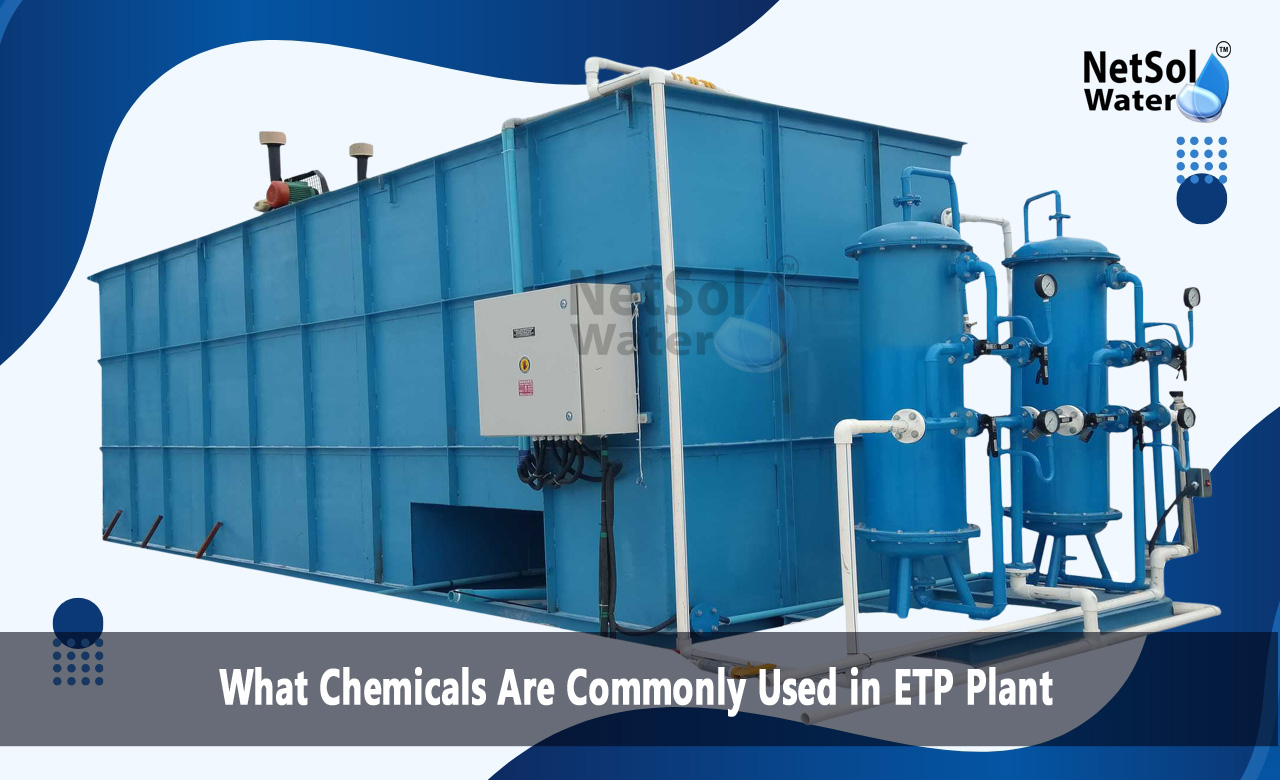What Chemicals Are Commonly Used in ETP Plant?
Effluent treatment plants clean wastewater and return clean water to the environment. In these plants operators add specific compounds to help remove particles and harmful agents. Each chemical plays a clear role in breaking down fine matter or changing water traits. A good mix of these compounds can speed up the process and make the output safe. We will cover several groups of compounds and show how they work step by step. By the end you will know which agents drive each stage and how they link in the whole cycle.
Coagulants and Flocculants
Effluent treatment plants rely on coagulation and flocculation to clear tiny solids from water. These steps help gather small particles into bigger clusters so they settle or float for easy removal. Let us have a look at some common coagulants and flocculants
AluminumSulfate
Aluminumsulfate brings raw water particles close so they stick together. Operators add it then mix the water gently and fine foul matter bonds into soft flakes. These flakes then settle down by gravity. This process cuts down turbidity and clears the way for later steps.
Ferric Chloride
Ferric chloride works like aluminumsulfate and offers a strong charge to draw bits together fast. This agent can work in water with a wider pH range. It also helps control smell in early steps and speeds up settling of flakes.
Polyaluminum Chloride
Polyaluminum chloride brings a higher density charge so it works with less dose. Operators like this agent for its quick action and smaller sludge yield. It binds tiny solids fast and makes flocculation more effective in cold or hard water.
pH Adjusting Chemicals
Regulating acidity and alkalinity helps all stages run at peak effect. The right pH lets coagulants bind well and it limits damage to pipes. Let us have a look at some pH adjusting agents
Sulfuric Acid
Operators add sulfuric acid to lower pH in alkaline water. This makes coagulants act faster and aids removal of metals and solids. Sulfuric acid also cuts scale build up in tanks and pipes so the plant works longer without repair.
Sodium Hydroxide
Sodium hydroxide raises pH when water runs too acidic. It helps balance the mix for smooth floc growth. This agent also stops corrosion in metal parts so the plant stays safe and strong in long runs.
Oxidizing Agents
Oxidizing agents break down harmful organic and inorganic matter by shifting electrons. These steps help in removing color and smell and stop microbes from growing back. Let us have a look at some strong oxidizers
Chlorine
Chlorine kills bacteria fast and oxidizes some organic toxins well. It also helps in later settling stages by breaking bonds in complex waste. Operators add it in small dose to avoid extra by products and ensure safe output.
Hydrogen Peroxide
Hydrogen peroxide splits into water and oxygen so it leaves no residue. It attacks color and odor compounds deep in the mix. This agent works best with UV in advanced oxidation but can also act on its own for mild tasks.
Ozone
Ozone brings the highest oxidation strength of these three. It breaks down tough organics and improves clarity in a short time. Its unstable nature means it must form on site. Yet it shines in plants seeking no chemical trace in final water.
Disinfectants
Plants add disinfectants after main cleaning steps to remove any lingering microbes. This stage must kill all germs to meet health norms and protect life. Let us have a look at some top disinfecting agents
Chlorine Dioxide
Chlorine dioxide kills bacteria and viruses without forming many harmful by products. It keeps pipelines free of biofilms. Operators add it at low dose and it stays active longer than free chlorine in later sections.
Peracetic Acid
Peracetic acid works fast on a wide range of microbes. It breaks down into vinegar and oxygen so it leaves no toxic remains. This agent adds quick kill power near the end of the train and guards against regrowth.
Anti Scaling Chemicals
Scaling can block pipes and harm pumps by forming hard crystals on surfaces. Plants need agents that stop scale without harming flow. Let us have a look at some anti scaling compounds
Polyphosphates
Polyphosphates wrap around scale forming ions and stop them from sticking. They keep soft particles in suspension so they flush out later. This helps maintain steady flow and prevents blockages in long runs.
Phosphonates
Phosphonates bind tightly to metal ions that cause scale. They form a shield so crystals cannot grow on walls. This agent works at low dose and protects surfaces for extended periods without waste.
Deodorizers
Some wastewaters carry strong smells that resist basic cleaning. Deodorizers target odor compounds and make output safe. Let us have a look at some common deodorizing agents
Activated Carbon
Activated carbon soaks up smelly molecules by trapping them in tiny pores. Operators add it in filter beds so water must pass through and leave scent compounds behind.
Potassium Permanganate
Potassium permanganate oxidises odour molecules deep in the mix. It also attacks some dyes and colour spots. This agent works well in hard water and can help protect filters from clogging.
Conclusion
You saw what chemicals are commonly used in ETPs and how each group links to the process. You know which coagulants build floc and which oxidizers break down toxins. You saw how pH agents and anti-scaling chemicals keep the plant strong. Use this blog to plan upgrades or training. Reach out now to learn more on what chemicals are commonly used in ETPs and request a consultation. Our team stands ready to help you improve your system.
Contact Netsol Water at:
Phone: +91-9650608473, Email: enquiry@netsolwater.com



